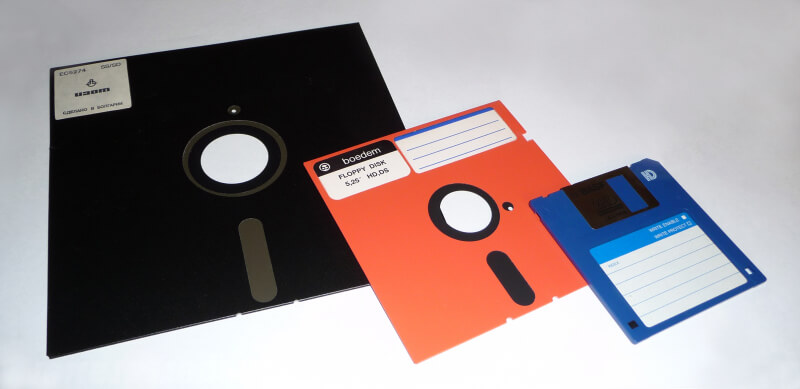Learn why this is the correct answer

Invented by Alan Shugart at IBM in 1967, the original floppy disk design measured 8 inches (200mm) in diameter, stored 80KB of data and became available for purchase in 1971 as a part of IBM's products before being sold separately in 1972 by companies including Memorex. In fact, Shugart himself left IBM and transitioned to Memorex in 1972, helping the company deliver the first commercially available read-write floppy disk drive (the Memorex 650).
A hallmark of computer storage in the 1970s. Here are five interesting facts about 8-inch floppies:
- The 8-inch floppy disk, originally called a "memory disk", was developed by IBM to serve as a medium for loading microcode into the System/370 mainframe during the booting process.
- The original 8-inch floppy disks had a storage capacity of about 80 kilobytes. However, as the technology progressed, they eventually managed to store up to 1.2 megabytes by the end of their reign.
- Unlike the later 5.25-inch and 3.5-inch floppy disks, the 8-inch disks had a flexible and truly "floppy" feel. They were made from a thin piece of magnetized material encased in a protective plastic envelope, with a central hole for the drive's spindle.
- The 8-inch floppy disk was eventually succeeded by the 5.25-inch floppy disk, which was then overtaken by the 3.5-inch floppy disk in the 1980s and 1990s.
- The save icon in many contemporary software applications resembles a 3.5-inch floppy disk. However, a generation before that, the 8-inch floppy was the icon of data storage. In fact, its importance can be seen in some early computer movies and TV shows.
Answering demand for a smaller format diskette that was more manageable and affordable for desktop word processing machines of the day, Shugart's team designed a 5.25-inch 'mini floppy' disk in 1976 that stored 87.5KB and within two years, more than 10 manufacturers were making 5.25-inch floppy drives.
The shrink to 3.5-inch disks came in 1982 after a consortium of 21 companies agreed to specifications, which included a formatted disk capacity of 280KB. That was shortly after increased to 720KB and eventually reaching 1.44 MB which was the most commonly known standard by the late 80s.
Other less common formats of 3.5-inch floppy drives were the Imation Superdisk (LS-120 and LS-240) which reached capacities of 120 and 240 MB, respectively, as well as the rare Sony HiFD released in the late 90s that offered up to 200 MB of storage capacity.
Another popular "superdisk" alternative was the Iomega Zip drive which launched with capacities of 100 MB. Later on it was available in 250 MB and 750 MB capacities, but by then rewritable CDs had been adopted more widely. Before USB flash drives proved to be the most popular rewritable storage medium among the general public.